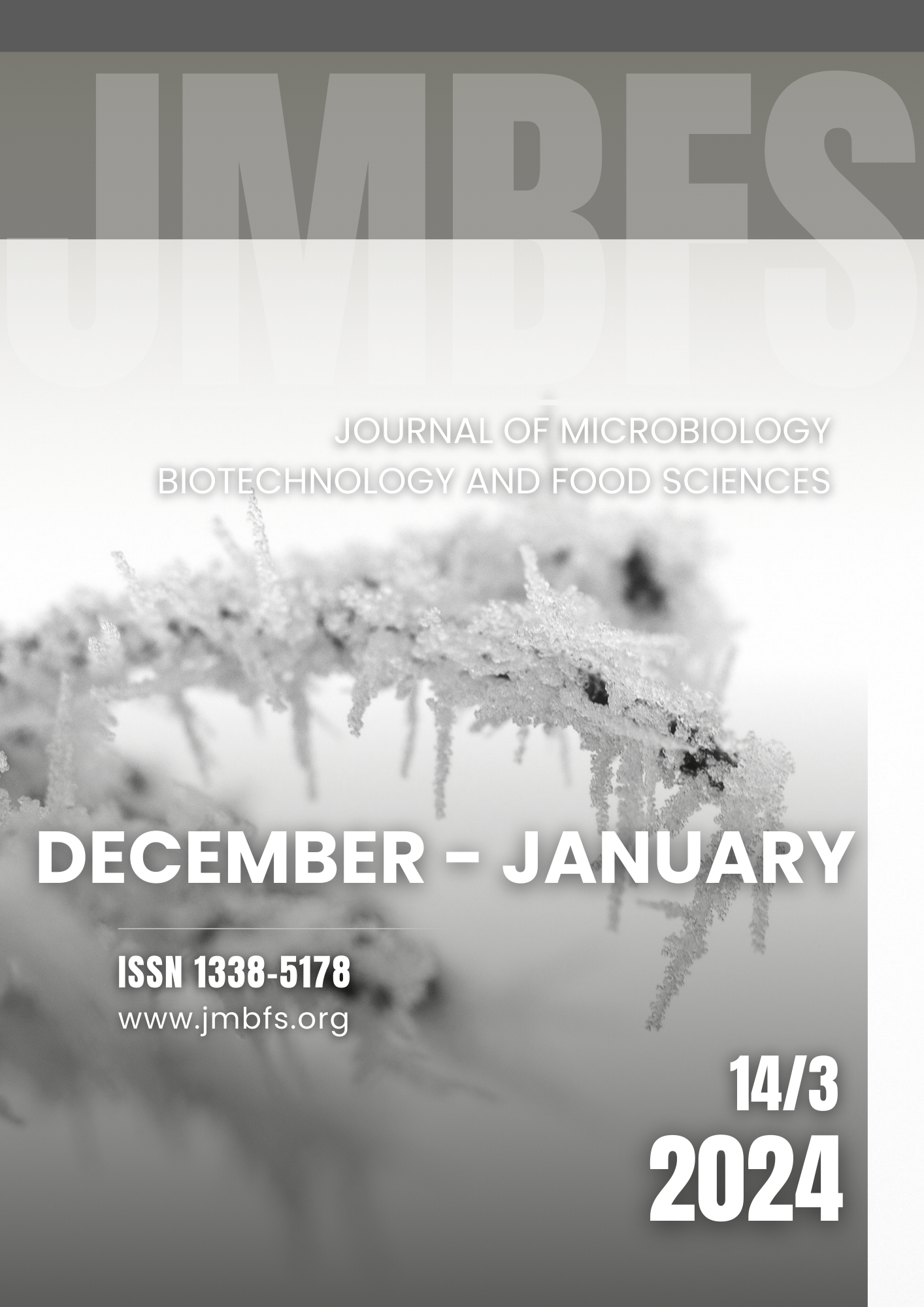INSTRUMENTAL COLOUR, TEXTURE AND SENSORY PROPERTIES OF PLJESKAVICA (TRADITIONAL SERBIAN MEAT PRODUCT) AFFECTED BY ADDITION OF FRESHLY EXTRACTED Allium ursinum L.
DOI:
https://doi.org/10.55251/jmbfs.11040Keywords:
pljeskavica, pattie, wild garlic extract, cold storage, instrumental colour, instrumental texture, CATA sensory analysisAbstract
Pljeskavica is a traditional Serbian burger-type meat product that is also very popular across the Balkan countries. The use of natural supplements containing various bioactive compounds, such as wild garlic (Allium ursinum L.) extracts, has gained more importance in the last several decades and has promising results for the prevention of the processes leading to detoriation. The present study aimed to evaluate the influence of Allium ursinum L. freshly squeezed extract (FSAULE) on colour, texture and sensory attributes of raw and grilled pljeskavica during cold (10 days) and freeze storage (90 days). Control (CON) and three experimental treatments containing different concentrations of FSAULE were prepared – AUL1 (1.32 mL/kg), AUL2 (4.40 mL/kg) and AUL3 (8.79 mL/kg). Redness and yellowness of raw meat and backfat particles were not altered after the addition of different amounts of FSAULE throughout cold and freeze storage. Meat and backfat particles of raw AUL3 were significantly darker compared to CON and other AULs. The results of texture profile analysis indicate that the addition of different amounts of FSAULE did not alter instrumental texture properties. According to the check-all-that-apply analysis of sensory properties, AUL3 was mostly characterized by affirmative attributes – pleasant odour, taste, saltiness, softness, juiciness and ideal texture. The affirmative attributes that were not present in AULs, but were present in CON, were detected by a small number of consumers – from 2.8% (pleasant colour) to 15.0% (pleasant odour). Most consumers found that intense garlic odour (85.0%) and intense garlic-like taste (83.9%) were not present in either CON or AULs.
Downloads
Downloads
Published
How to Cite
Issue
Section
License
Copyright (c) 2023 Slaviša Stajić, Nikla Stanišić, Nemanja Miletić, Marko Petković, Volker Heinz, Igor Tomasevic, Vladimir Kurćubić

This work is licensed under a Creative Commons Attribution 4.0 International License.
All papers published in the Journal of Microbiology, Biotechnology and Food Sciences are published under a CC-BY licence (CC-BY 4.0). Published materials can be shared (copy and redistribute the material in any medium or format) and adapted (remix, transform, and build upon the material for any purpose, even commercially) with specifying the author(s).





